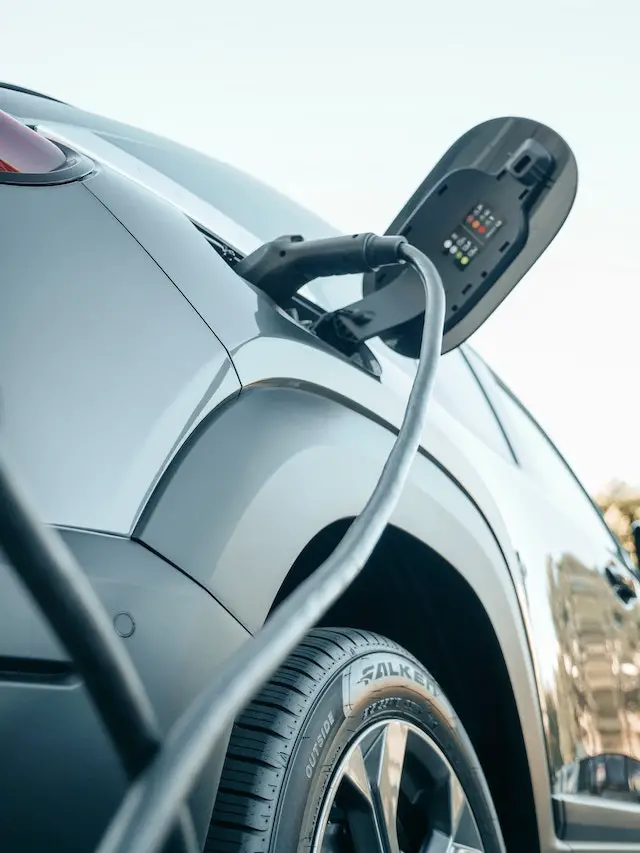In the face of climate change and the need to reduce greenhouse gas emissions, sustainable transportation has emerged as a critical solution. By shifting from traditional fossil fuel-powered vehicles to more eco-friendly alternatives, we can make significant progress in mitigating the environmental impact of transportation. In this blog post, we will explore the role of sustainable transportation in reducing emissions and delve into the pros and cons of today’s electric cars, a prominent example of sustainable transport.

The Role of Sustainable Transportation in Reducing Emissions:
Transportation is a significant contributor to global carbon emissions, primarily through the combustion of fossil fuels. Embracing sustainable transportation options can lead to substantial reductions in greenhouse gas emissions. Here are a few key ways sustainable transportation can help combat climate change:
1. Electrification:
Electric vehicles (EVs) play a crucial role in sustainable transportation. By shifting from gasoline or diesel-powered vehicles to electric cars, we can significantly reduce carbon emissions. EVs produce zero tailpipe emissions, meaning they do not release pollutants or greenhouse gases during operation. This transition is crucial for achieving a greener and more sustainable transport sector.
2. Renewable Energy:
Pairing sustainable transportation with renewable energy sources is a powerful combination. Charging electric cars using electricity generated from renewable sources such as solar or wind further reduces carbon emissions associated with transportation. It allows for cleaner and greener mobility while decreasing dependence on fossil fuels.
3. Public Transportation and Active Modes:
Investing in efficient and accessible public transportation systems encourages people to use shared modes of transport, reducing the number of individual vehicles on the road. Additionally, promoting active modes of transportation like walking and cycling offers emission-free alternatives for short-distance travel, improving air quality and reducing congestion.
Pros and Cons of Electric Cars:
Pros:
1. Zero Emissions: Electric cars produce zero tailpipe emissions, leading to cleaner air quality and reduced greenhouse gas emissions.
2. Energy Efficiency: Electric motors are more energy-efficient than internal combustion engines, resulting in lower energy consumption and reduced dependence on fossil fuels.
3. Lower Operating Costs: Electric cars typically have lower operating costs due to the lower cost of electricity compared to gasoline or diesel fuel.
4. Renewable Energy Integration: Electric cars can be charged using electricity generated from renewable energy sources, further reducing their environmental impact.
5. Technological Advancements: The continuous development of electric vehicle technology leads to improved battery range, faster charging times, and enhanced driving experience.
Cons:
1. Limited Driving Range: Electric cars may have a limited driving range compared to traditional vehicles, requiring careful planning for longer trips and the availability of charging infrastructure.
2. Charging Infrastructure: The charging infrastructure for electric cars is still developing, and access to public charging stations may be limited in some areas. According to the World Economic Forum, the United States has about 125,000 public charging stations, while Norway has over 250,000 and the Netherlands has over 180,000.
3. Longer Refueling Time: Charging an electric car takes longer than refueling a conventional vehicle, although advancements in fast-charging technology are reducing this gap. The average wait time for recharging an electric vehicle in the United States depends on a number of factors like, the type of charger, the battery capacity of the EV, and the current state of charge of the battery. Level 2 chargers are the most common type of EV charger and can provide a range of up to 25 miles per hour of charging and according to the U.S. Department of Energy, the average wait time for recharging an EV using a Level 2 charger is about 4 hours.
4. Upfront Cost: Electric cars typically have a higher upfront cost compared to their gasoline-powered counterparts, although incentives and subsidies can offset this to some extent.
5. Battery Life and Recycling: The lifespan of electric vehicle batteries and the challenges associated with their recycling and disposal present environmental concerns that need to be addressed. EV batteries contain a number of elements, including lithium, cobalt, and nickel, that can be harmful to human health and the environment if they are not properly disposed of. For example, lithium is a highly reactive metal that can catch fire if it comes into contact with water. Cobalt is a toxic metal that can cause respiratory problems and neurological damage. Nickel is a heavy metal that can pollute water and soil.
So in conclusion, sustainable transportation, particularly through the adoption of electric cars, plays a vital role in reducing emissions and mitigating the impacts of climate change. The transition to electric vehicles, coupled with renewable energy integration, offers a significant opportunity to achieve a greener and more sustainable transport sector. While electric cars have numerous advantages, including zero emissions and lower operating costs, there are still challenges such as limited driving range and charging infrastructure. As technology continues to advance and support from governments and industries grows, the pros of electric cars will likely outweigh the cons.

